| Anhinga Anhinga anhinga
(aka Snakebird)
Brazilian name: biguatinga
|
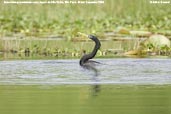 |
Brazil and Ecuador The South American subspecies, A. a. anhinga, differs slightly from the North American sub-species, A. a. leucogaster, in being larger and having a broader pale tip to the tail. When swimming, it keeps just its long neck and upward pointing head above water which leads to it being known as "Snakebird" |
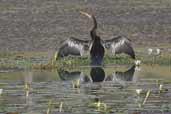 |
Their long, slender necks are more like a heron than a cormorant with an angle midway that allows them to spear fish with a rapid thrust. They are normally found in pairs or small family groups and can be quite territorial. However, they are often found with Cormorants and Herons with whom there appears to be little competition given the different fishing techniques used. The Anhinga will fish alone and not very actively, waiting, submerged, for the prey to come within reach of its darting bill. |
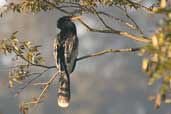 |
This fishing technique is possible because of a heavier skeleton and the fact that its feathers absorb water rather than forming an air cushion. For this reason, birds are often seen perching with their wings outstretched drying off. This stance is also used for thermoregulation. While there is agreement that the name comes from Tupí Indian, there is disagreement about its meaning with Jobling saying it means devil bird, or evil spirit of the woods, while Sick, more prosaically, says that it means small head. |
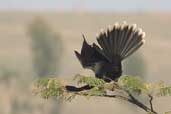 |
See the distribution map at Birdlife International.
|
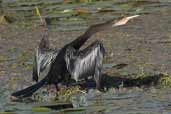 |
|
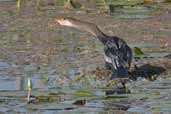 |
|
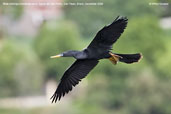 |
|
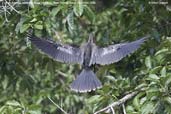 |
|
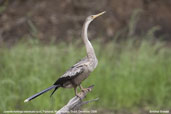 |
|
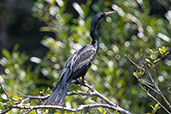 |
|
|
|









